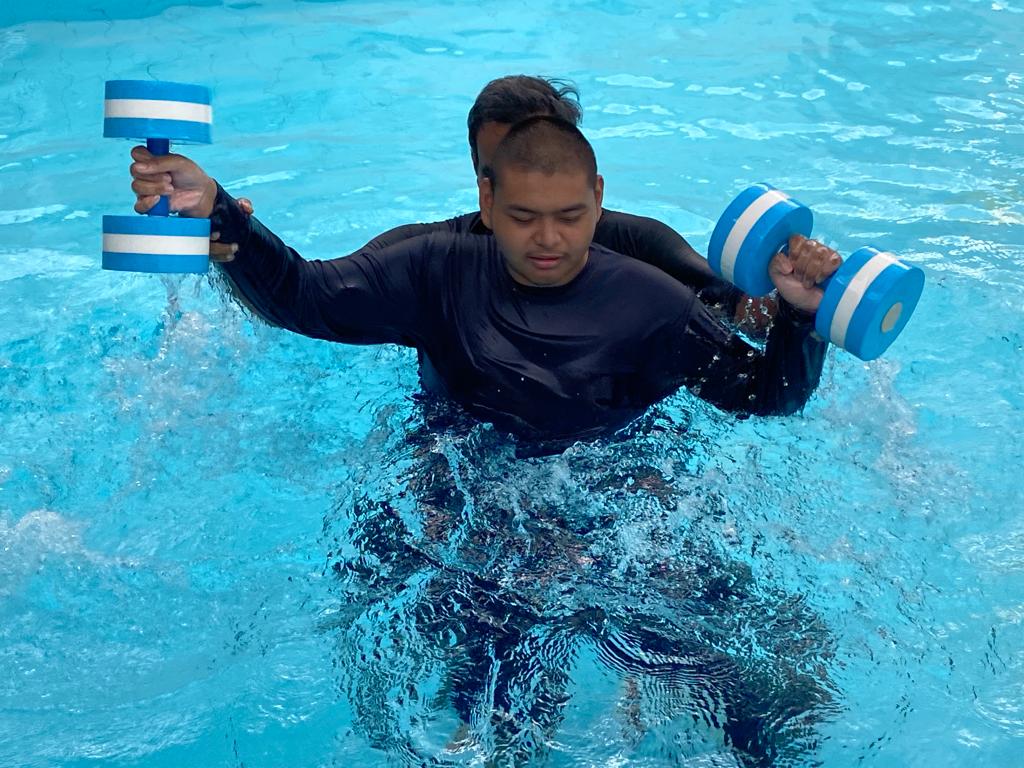
The use of water as a therapeutic medium offers unique benefits for individuals with physical challenges, including reduced weight-bearing on the joints, improved circulation, and increased resistance for muscle strengthening. The hydrotherapy sessions are held five days a week and cater to 50 individuals, including alumni. At the Association we are following Halliwick Concept of hydrotherapy and aqua therapy.
Hydrotherapy is the use of water and water-induced resistance to improve physical abilities and function. Water offers a unique therapeutic environment that can be harnessed by a skilled provider to allow activities that are impossible to perform on land. This therapy is accepted by the medical community as an effective method to rehabilitate and re-educate the human body. Hydrotherapy encompasses all types of therapies using water that is from completely passive exercise, therapist induced exercise to active exercises based on therapist instruction.
There are many specialty techniques, each with its own benefits. They include amongst others,
Aichi
Bad Rgaaz Ring Method
AQUATIC Feldenkrais
Watsu
and, perhaps the most widely known, the Halliwick Concept.
The CPCAP first introduced the Halliwick concept in 1995. It originated from the collaborative efforts of James McMillan MBE, a swimming instructor and hydromechanics engineer, and his wife Phyl McMillan MBE in the late 1940s and early 1950s. The International Halliwick Association (IHA) defines the Halliwick Concept as an inclusive teaching approach that empowers individuals, especially those with physical and/or learning difficulties, to actively participate in water activities, move independently in water, and acquire swimming skills.
Aqua therapy, which we incorporated into our programme in 2016, involves active exercises in the water, based on instruction but no passive exercise. In passive exercises, the therapist/instructor helps to move the joints, while in active exercises the children have to move the joints on their own. In aqua therapy, exercises otherwise done on land are carried out in the water to minimize the stress on joints, bones, and muscles.
We have a medium-sized pool with a depth from 1 meter at the shallow end to 1.44 meters at the deep end. During hydrotherapy sessions, the children are handled on a one-to-one basis.
As part of the safety precautions, we always ensure the areas around the pool are always clean and dry, and that the water is clean and chlorinated. The children and staff take a shower before entering and after leaving the pool. We also make sure that children and staff are fit for the session and a member of staff oversees the session, monitoring all activities.
